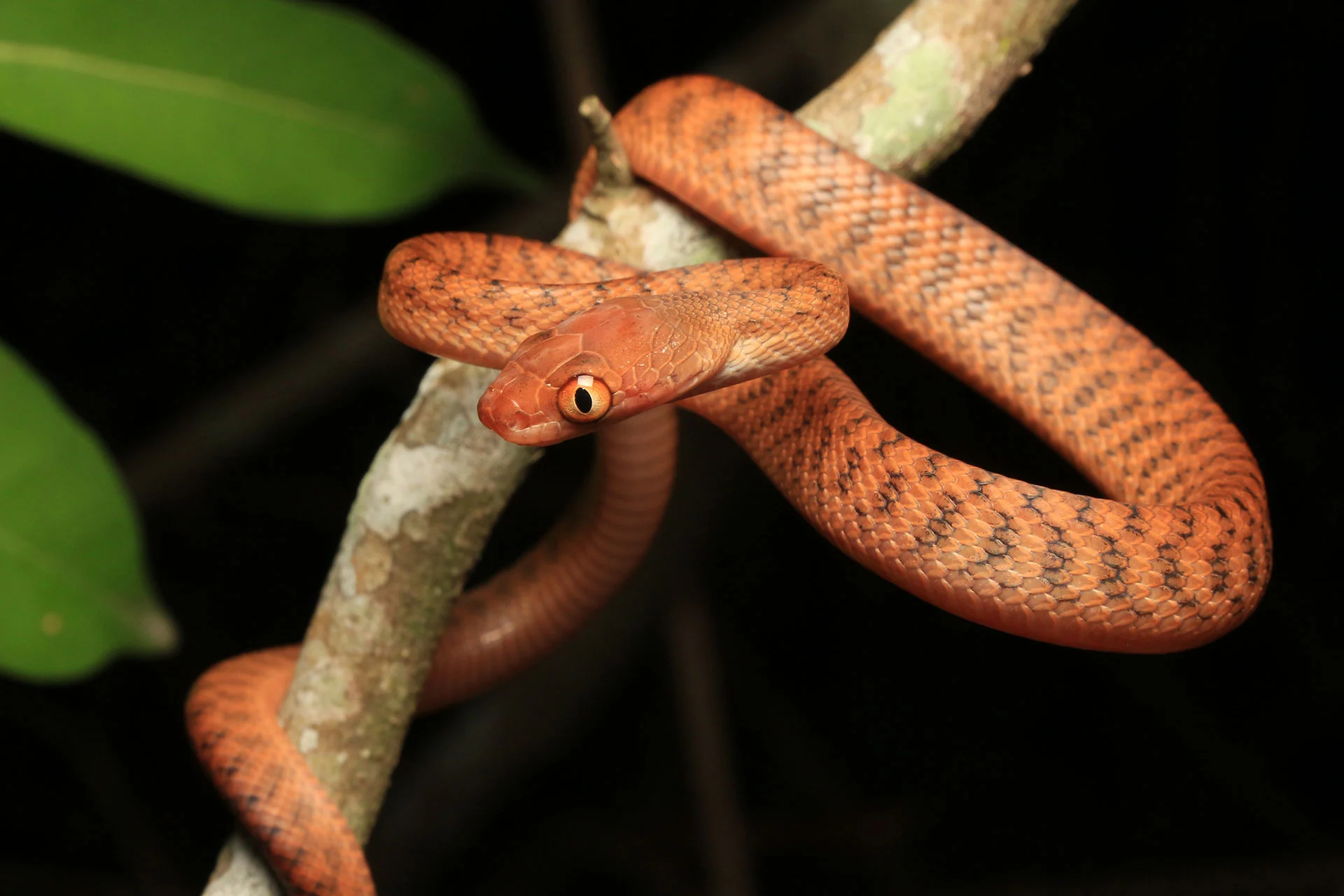Mangrove snakes are fascinating creatures of Southeast Asia’s coastal wetlands. Mildly venomous but rarely dangerous, they play a vital role in their ecosystem. How do they survive in saltwater? Discover their unique adaptations and behaviors and how to observe them safely!
⫸ Introduction to Mangrove Snakes
Mangrove snakes are an intriguing group of serpents that call the unique and dynamic mangrove forests their home. Let’s delve into the world of these fascinating reptiles, exploring their identity, characteristics, and where you might encounter them on our planet.
What are mangrove snakes?
Mangrove snakes belong to the genus Boiga, a collection of mildly venomous, rear-fanged snakes within the Colubridae family. These sleek reptiles aren’t your typical backyard snake, boasting adaptations suited explicitly to their coastal habitats.
Brief overview of the genus Boiga
The Boiga genus contains approximately 35 species. These snakes are known for their large eyes with vertical pupils (called “cat-eyed snakes”) and their often slender, arboreal bodies. While their venom is considered mild for humans, it’s potent enough to subdue their preferred prey.
Unique characteristics and adaptations
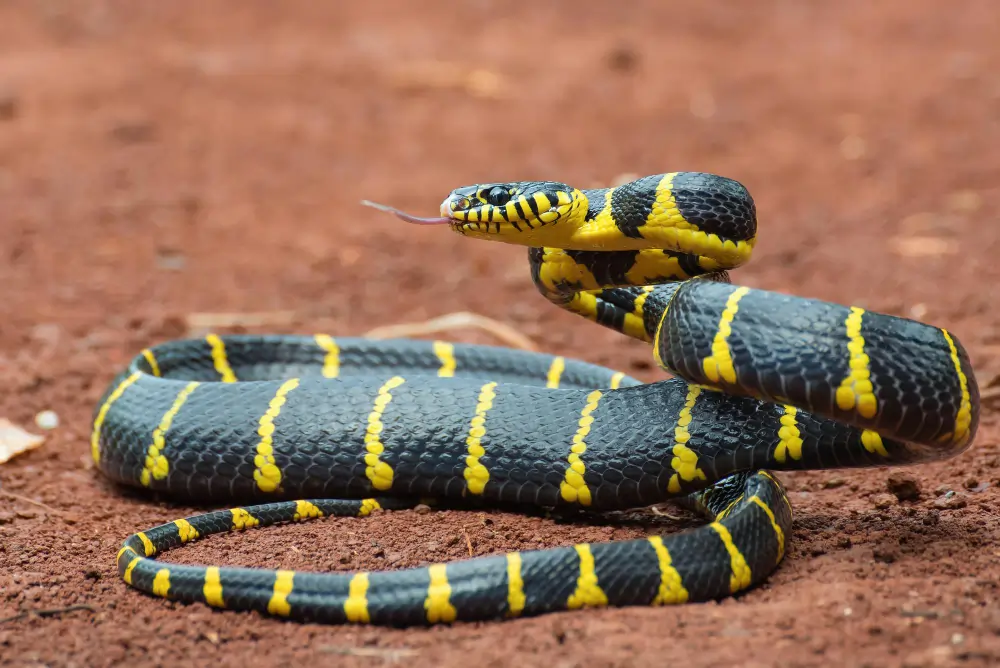
Mangrove snakes have developed several features that allow them to thrive in brackish water environments. Some species possess slightly grooved scales, which help them grip wet branches. Their ability to tolerate some salinity sets them apart from many other snakes. They are primarily nocturnal, and their large eyes aid in hunting under low-light conditions.
Distribution and range across the globe
Mangrove snakes are found throughout Southeast Asia, parts of India, Australia, and various island chains in the Indo-Pacific region. Their specific habitats are tied to mangrove forests, making them crucial members of these coastal ecosystems.
⫸ Habitat and Ecology
Mangrove snakes, fascinating members of the Boiga genus, thrive in a complex and challenging environment. Understanding their habitat and ecological niche is key to appreciating these unique serpents and the delicate ecosystems they call home.
Geographic range (South Asia to Australia)
Mangrove snakes inhabit a vast swathe of the Indo-Pacific region. Their range stretches from Southeast Asia through the Philippines and Indonesia, reaching as far as Australia and some Pacific Islands.
The mangrove ecosystem: Characteristics and importance
Mangroves are salt-tolerant trees and shrubs that form intricate forests along tropical and subtropical coastlines. These ecosystems offer:
- Abundant food sources: Small mammals, birds, reptiles, and fish flourish in the tangle of roots.
- Protection: Dense foliage provides shelter from predators and the harsh elements.
- Unique water conditions: Mangroves thrive in brackish water where freshwater rivers meet the sea.
Mangrove snake niche: Role in the food chain
Mangrove snakes are important mesopredators within their ecosystem. While they face threats from larger predators, they significantly impact the populations of their prey species, helping maintain delicate ecological balance.
Predators and prey of the mangrove snake
- Predators: Monitor lizards, birds of prey (eagles, hawks), and larger snakes occasionally prey on mangrove snakes.
- Prey: Mangrove snakes hunt various animals, including small mammals, birds, lizards, frogs, and fish.

Adaptations to brackish/saltwater environments
Mangrove snakes have evolved fascinating adaptations to cope with salty environments:
- Salt Glands: These specialized glands help excrete excess salt consumed in their food and water.
- Semi-Aquatic: Mangrove snakes are adept swimmers, easily navigating both freshwater and saltwater.
- Arboreal: Their slender bodies and strong tails are optimized for climbing through tangled mangrove branches.
⫸ Physical Description and Adaptations
Mangrove snakes, members of Boiga, are built for success in their challenging environment. Let’s explore their distinctive features and how they easily navigate the tangled mangroves.
Coloration and Patterns
Many mangrove snake species boast striking patterns designed for camouflage. The iconic black-and-yellow mangrove snake (Boiga dendrophila) has bold yellow bands that break up its silhouette in the dappled light of the forest. Other species sport cryptic brown or gray coloration with intricate patterns to blend seamlessly with bark and foliage.
Eyesight and those distinctive cat-like pupils
Like many nocturnal and crepuscular snakes, mangrove snakes possess vertically elliptical pupils resembling those of cats. This adaptation allows for excellent depth perception and light-gathering abilities in low-light conditions, essential for hunting at dusk and dawn.
Venom and hunting strategy
Mangrove snakes are rear-fanged, meaning they have enlarged, grooved teeth at the back of their mouths that deliver a mild venom. Agile climbers often ambush prey like birds, small mammals, and lizards from the branches. While their venom helps subdue prey, constriction also plays a role in securing a meal. The snake’s slender, laterally compressed body helps it maneuver through dense vegetation, which is perfectly suited for arboreal hunting.
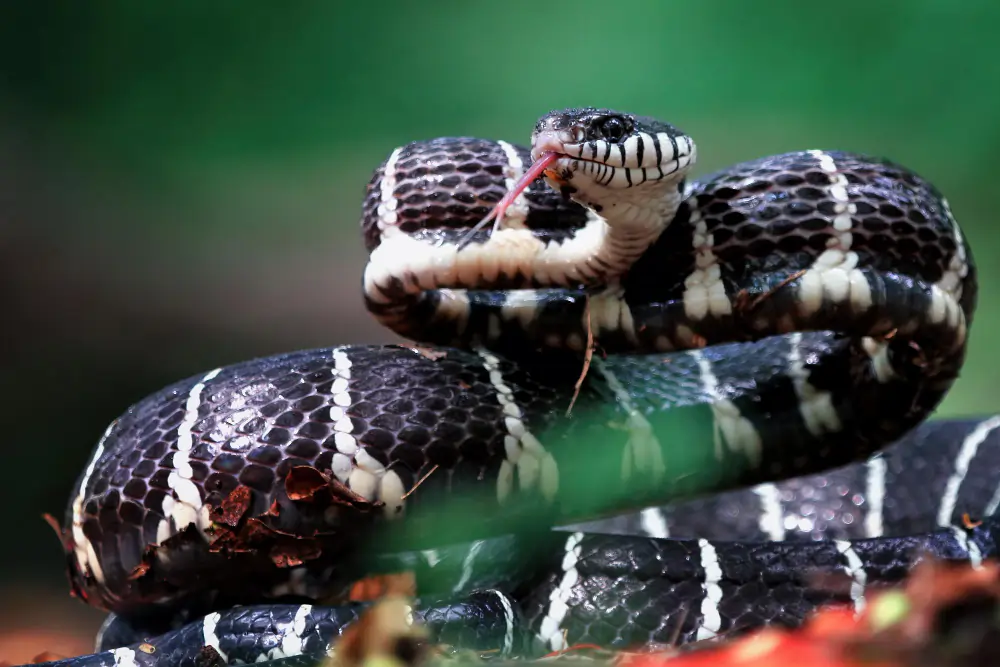
⫸ Diverse Species of Mangrove Snakes
Mangrove snakes aren’t a single species but encompass several distinct species within the genus Boiga. Each has evolved fascinating adaptations to thrive in its coastal habitats. Let’s explore some of the most well-known:
Black-and-yellow mangrove snake (Boiga dendrophila)
This striking species is the quintessential mangrove snake. Its jet-black body is adorned with vibrant yellow bands, creating a stunning pattern. One of the largest Boiga species, it inhabits Southeast Asia and parts of northern Australia. The black-and-yellow mangrove snake is a skilled climber, expertly navigating the dense mangrove forests.
Brown tree snake (Boiga irregularis - note the invasive status)
Sadly, the brown tree snake is infamous for its role as an invasive species. Accidentally introduced to Guam, it has decimated the island’s native bird populations. While native to parts of Australia and nearby islands, its destructive impact highlights the risks of introducing non-native species into delicate ecosystems.
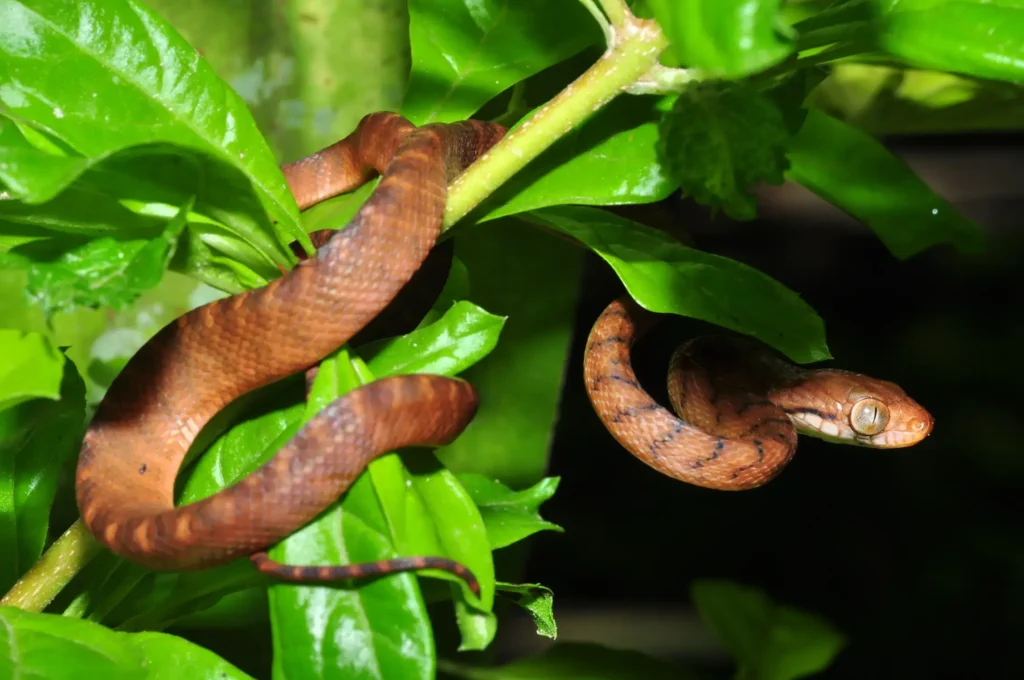
Other notable species and their unique characteristics
- Dog-faced water snake (Cerberus rynchops): While not a true Boiga species, it shares the mangrove habitat and has a mildly venomous bite.
- Gold-ringed cat snake (Boiga siamensis): This nocturnal hunter is known for its beautiful banding and iridescent scales.
- Oriental cat snake (Boiga trigonata): This snake is found in India and nearby regions. Its triangular head shape sets it apart.
⫸ Species Spotlight: The Brown Tree Snake
While many intriguing species of mangrove snakes exist, the Brown Tree Snake (Boiga irregularis) warrants special attention. This slender, mildly venomous serpent stands out for its unique features and devastating impact as a highly destructive invasive species.
A particularly notorious invasive species
Native to Australia, New Guinea, and islands in the Indo-Pacific region, the Brown Tree Snake was accidentally introduced to Guam after World War II. Lacking natural predators on the island, this adaptable snake’s population exploded. Their expansion brought an ecological catastrophe.
The damage they cause to ecosystems
The Brown Tree Snake is a generalist predator. Its extensive diet includes birds, lizards, small mammals, and snakes. In Guam, the snake has driven nearly all of the island’s native forest bird species to extinction. Their voracious appetite also disrupts power grids, preying on birds that nest near electrical equipment. The Brown Tree Snake is a stark reminder of the fragility of island ecosystems and the risks posed by invasive species.
⫸ Diet and Hunting Strategies
Mangrove snakes, masters of their tangled domain, have evolved fascinating techniques to thrive in their coastal habitats. Let’s delve into how they hunt and what forms the basis of their diet.
Primary prey items (small mammals, birds, lizards)
Mangrove snakes are opportunistic hunters, feeding on various prey that reflect the abundance within their environment. Their primary targets include:
- Small mammals: Rodents like mice and rats that venture into the mangroves become easy meals.
- Birds: Mangrove snakes ambush unwary birds, sometimes snatching them from nests.
- Lizards: Geckos, skinks, and other reptiles are frequently on the menu.
Arboreal hunting techniques
As primarily tree-dwelling snakes, mangrove snakes possess remarkable adaptations for hunting in the branches. Their slender bodies allow for agile movement through dense foliage, and their excellent eyesight aids in spotting potential prey. Primarily nocturnal hunters, they often lie in wait, striking with surprising speed when the opportunity arises.
Potential use of mild venom
Mangrove snakes are rear-fanged and possess mild venom. While not considered dangerous to humans, this venom likely contributes to subduing prey. Venom might help to immobilize small animals or birds quickly, preventing a struggle that could dislodge the snake from its perch.
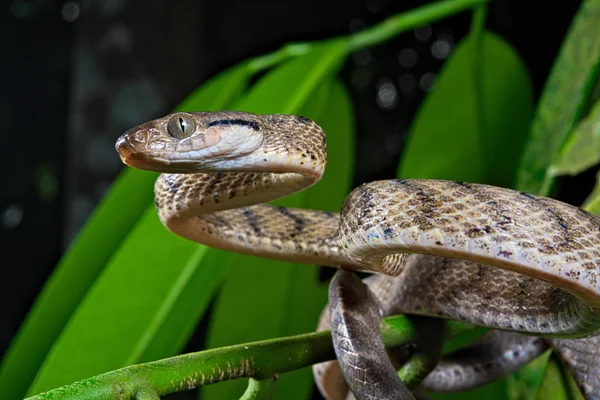
⫸ Fascinating Snake Behaviors
Mangrove snakes are far from ordinary reptiles. Their behaviors illustrate the remarkable adaptations honed for living within the challenging mangrove environment. Let’s delve into a few of their most captivating traits:
Arboreal Lifestyle and Movement
True to their name, mangrove snakes spend much of their lives in trees. Their slender, laterally compressed bodies are perfect for navigating through dense branches and foliage. Mangrove snakes move seamlessly, almost like an extension of the branches themselves. They use a mix of serpentine undulations and concertina-like motions to climb and descend with surprising agility and grace.
Hunting and Feeding Habits
Mangrove snakes are nocturnal hunters, relying heavily on their keen eyesight and sense of smell to locate prey in low-light conditions. Their diet mainly consists of birds, small mammals like rodents, lizards, and sometimes fish or frogs. They ambush their prey, striking with speed and often employing their mildly venomous fangs to subdue the struggling animal before swallowing it whole.
Reproduction and Lifecycles
Mangrove snakes are oviparous, meaning they lay eggs. Females deposit clutches of elongated eggs in hidden nests, often in hollowed-out areas of trees. The hatchlings emerge fully independent, equipped with the instincts to thrive in their mangrove home. Information on mangrove snake lifespans in the wild is limited, but they are believed to live several years.
⫸ Conservation and Threats
Mangrove snakes, fascinating as they are, face an uncertain future. Their delicate mangrove habitats are under constant pressure, putting these unique reptiles at risk. Here’s a look at the threats they face and the ongoing efforts to conserve them:
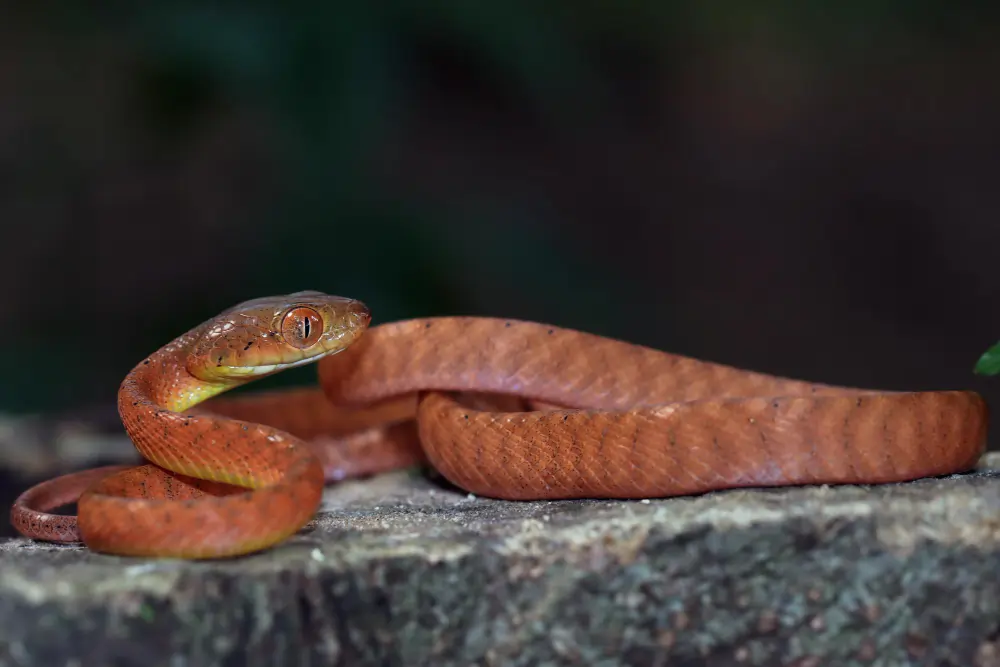
Habitat Loss: The Biggest Threat
Mangroves are disappearing at alarming rates thanks to coastal development, shrimp farming, and deforestation. As mangroves shrink, mangrove snakes lose their homes, hunting grounds, and breeding areas. This habitat fragmentation isolates snake populations, making them vulnerable to decline.
Other challenges - Invasive species, pollution:
Invasive species like the brown tree snake spell trouble for mangrove snakes, competing for food and sometimes preying on them. Pollution from industrial and agricultural runoff weakens mangrove ecosystems and can harm snakes and their prey.
Conservation Efforts Underway
Thankfully, awareness of the plight of the mangrove snake is growing. Organizations are working to:
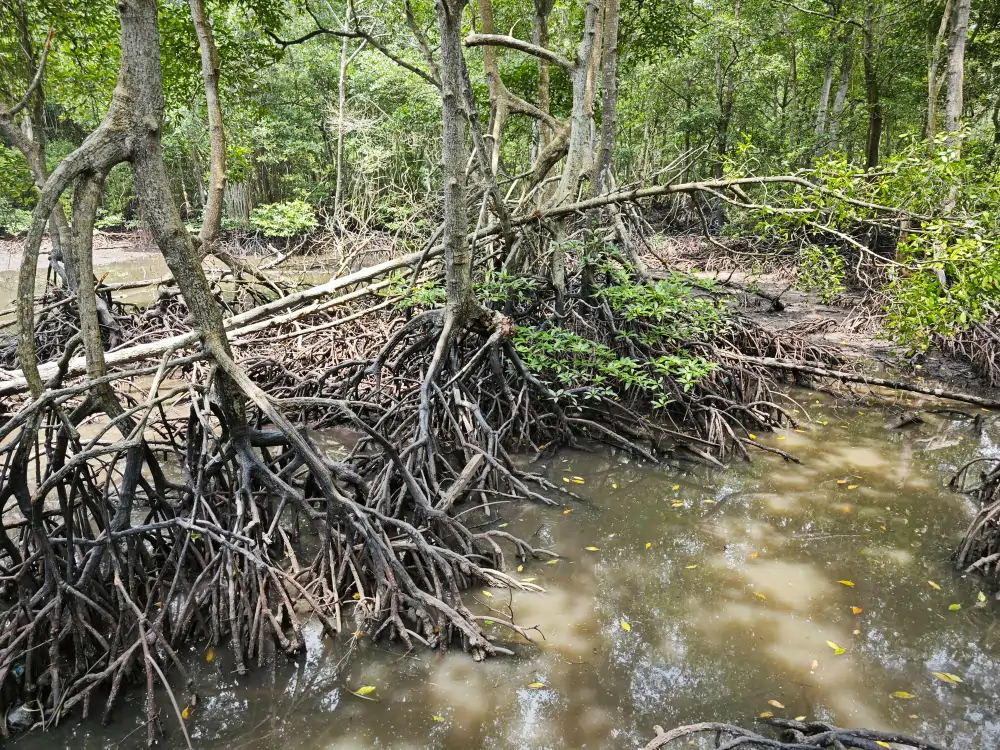
- Protect Mangrove Forests: Establish protected reserves and promote sustainable coastal management practices.
- Mitigate Invasive Species: Controlling populations of harmful invasives to allow native snakes to thrive.
- Educate the Public: Dispelling myths and fostering an appreciation of mangrove snakes and their role in the ecosystem.
⫸ Can I Encounter a Mangrove Snake?
The chance of encountering a mangrove snake depends entirely on where you are. These fascinating reptiles inhabit a specific range across Southeast Asia, parts of Indonesia, and northern Australia. If you’re exploring the coastal mangrove forests within this region, you might spot a mangrove snake slithering among the roots or basking on branches. However, they are often well-camouflaged and may be shy around humans, so an encounter is only guaranteed if it is not.
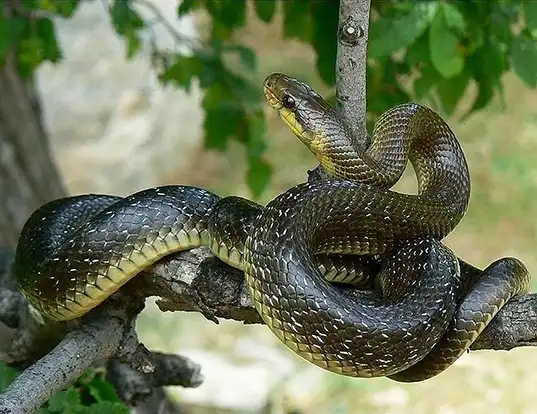
Are mangrove snakes dangerous to humans?
Mangrove snakes possess mild venom and rear fangs, but the risk to humans is minimal. Bites can cause localized swelling, pain, and sometimes nausea, but no recorded fatalities are attributed to mangrove snakes. These snakes primarily utilize their venom to subdue prey and tend to be defensive rather than outwardly aggressive towards humans.
Safely observing mangrove snakes in their habitat
If you can observe mangrove snakes in the wild, do so with respect and caution. Here are some tips:
- Hire a knowledgeable guide: Local guides understand the habitats and behaviors of mangrove snakes, increasing your chances of a safe and thrilling encounter.
- Maintain distance: Admire these snakes from afar, using binoculars or a zoom lens if needed.
- Avoid sudden movements: Snakes are easily startled, so move slowly and avoid actions that could be perceived as a threat.
⫸ The Enduring Fascination of the Mangrove Snake
From their stunning patterns to their remarkable adaptations, mangrove snakes hold an undeniable allure for nature lovers and reptile enthusiasts alike. As we delve into their world, a sense of wonder arises, reminding us of the incredible diversity found within our ecosystems.
Key Takeaways About This Unique Snake
- Mangrove experts: These snakes have mastered living in harsh brackish and saltwater environments.
- Mildly venomous but not fatal: Their venom is mainly used for prey and unlikely to threaten humans seriously.
- Essential to their ecosystem: Mangrove snakes help maintain a healthy balance within the delicate mangrove food web.
- Their habitats are under threat, highlighting the importance of conservation efforts.
⫸ Conclusion
The mangrove snake embodies the remarkable tenacity and beauty of nature. By learning more about these captivating creatures, we deepen our appreciation for the intricate web of life. Let’s continue to spread awareness about mangrove snakes and support initiatives to protect their fragile habitats. Together, we can ensure these fascinating serpents thrive for generations to come.
Call to Action: Want to learn more or get involved in mangrove conservation? Visit to discover how to make a difference.

